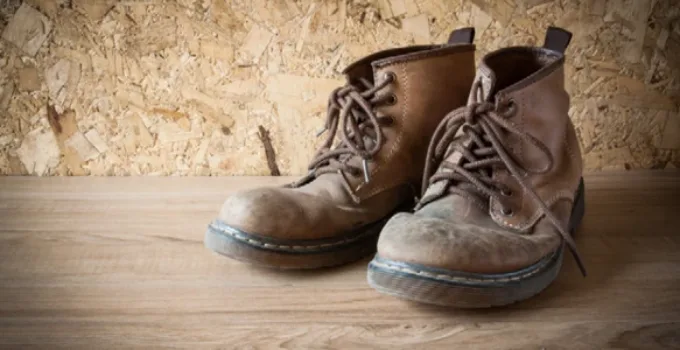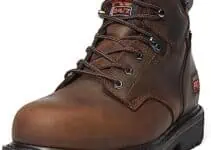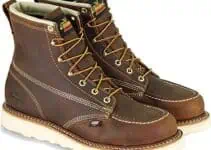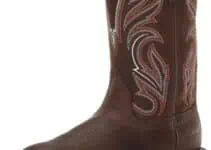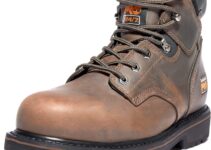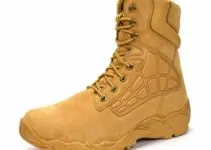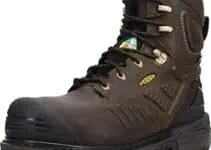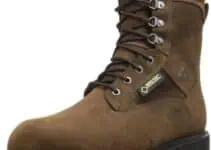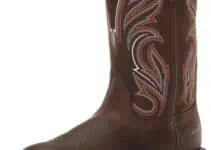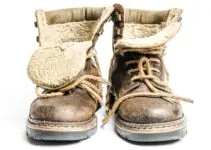Have you had work boots for quite some time now? Maybe it’s time to change them. Unlike a normal pair of shoes, the wear of the sole is not the only element that should guide your decision.
Compliance and protection
A work boot must always meet a clear objective: to protect the wearer against the risks he or she runs in his or her work or in a DIY activity.
The technical characteristics of the shoe that allow it to protect you must not be degraded.

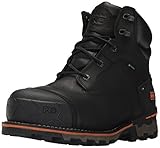






If, for any reason, the shoes are no longer reliable enough and do not comply with the safety standards, they must be changed (to meet the requirements of the standards, precise methodologies exist for testing the products).
Normal wear and tear over time
When you wear your work boots regularly and for long hours, walking miles in them (sometimes without even realizing it), inevitably you wear them out.
The sole, for example, can quickly show signs of wear and tear: the rubber or material that makes up the sole will start to wear down in certain areas, such as the heel, as it rubs against the ground.
This will be especially true if you work in a slightly abrasive environment (stones, gravel, cement).
The seams are also weak points and are often among the first elements to deteriorate on a shoe. If the seams give way after two weeks, this is obviously not normal. But after several months of use, this can be explained.
More generally, the material that will make up the upper of the shoe can be subjected to severe testing depending on the environment and conditions of use.
A leather upper, for example, regularly exposed to bad weather, mud, cement, etc., will be damaged more quickly than if the shoes are constantly worn in a dry and temperate environment.
This is why it is so important to take good care of your work boots so that they last as long as possible.
Amazon deals
After an impact or incident
In addition to these highly visible indicators of the state of wear of your shoes, there is one crucial point to check: the protective toe cap.
Indeed, the shell that protects your toes in a work boot is designed to resist shocks of 200 joules. This is a necessary characteristic for them to be considered as work boots, and is defined by the EN 20345 standard. This toe cap, therefore, can withstand the fall of an object of 20 kg from a height of up to 1 m, or a crushing of 1,500 kg.
But this does not mean that the mouthpiece is made to withstand such stresses again and again!
After such a shock or crushing, and even without reaching the limit value, the end cap undergoes physical and mechanical deterioration. Its structure is necessarily weakened, which can (most likely) make it unfit for its function.
Thus, if an incident occurs and your work boots take a shock following a falling object or a crushing, you must change them.
A change in feel
Another element that can be revealing is your comfort. Yes, wearing your shoes for hours every day, putting them through the wringer every day, they are abused and their components, their materials, can move, warp or deteriorate.
If after months, your shoes that were as comfortable as slippers are becoming uncomfortable or even painful to wear, don’t wait: it’s time to change them!
Life span
It is difficult to give a firm and definitive answer, as there are so many elements that can influence the lifespan of a pair of work boots. Each manufacturer has its own recommendations, sometimes model by model. But on the whole, we can reasonably estimate that a pair will last between 6 months and 1 year.
More perhaps, if they are of quality, that you maintain them well and that they are not subjected too much to hard tests.
Importance of safety footwear at work (Dangers of not wearing the right boots)
317 million occupational accidents occur annually worldwide. In addition, 6,300 people die every day as a result of work-related accidents or illnesses; more than 2.3 million deaths per year.
Accidents happen without warning. Therefore, safety should be a key component of life, especially at work. In this sense, safety footwear is an essential element to avoid foot injuries and other related disorders.
Safety footwear protects you at work
Here are the main reasons that demonstrate the importance of safety footwear at work. Safety footwear protects against falling objects. when workers carry heavy objects or work in places with a lot of movement; people, machines, vehicles, etc.
It is common for tools or other things to fall. These accidents can cause crushed feet, broken bones and even the loss of toes.
These accidents are especially common in the construction industry. In these cases, proper safety footwear can prevent foot fractures.
Safety footwear protects against punctures in the foot.
When workers are at risk of stepping on sharp objects or being struck by them in the foot. For example, in construction sites many sharp objects can be in the way of workers. A soft-soled shoe may not provide sufficient protection, while one with heavy-duty, heavy, and hard insoles and thick materials around the foot may.
Safety footwear protects from cuts
Sharp machinery or moving parts can create cutting hazards for workers. Especially in industries such as logging, where chainsaws are used.
Safety footwear protects against electrical hazards
Electricity poses a variety of hazards on the job. Workers can be electrocuted or build up static electricity that can create sparks in certain environments. Such accidents are especially deadly, so special care must be taken. To reduce the risk, it is necessary to wear non-conductive footwear made of leather, rubber, or other materials that do not conduct electricity.
Safety footwear protects against slips, trips, and falls.
These types of accidents happen all the time in the workplace. While floor material plays a major role in these types of accidents, safety footwear with proper traction can prevent these falls. They also help with balance and can prevent falls on ladders, which are common when workers do not wear shoes with proper soles.
Safety footwear reduces fatigue
People who work standing on hard surfaces such as concrete can tire easily, especially when they don’t have the right shoes. For this, safety boots provide adequate cushioning and arch support to help relieve strain on the muscles.
Safety footwear protects against burns
Burns from fire or chemicals can occur on the job. Shoes made of durable materials can prevent them. They protect feet from chemical spills, molten metal splashes or other hazardous substances.
Safety footwear protects against adverse weather conditions.
Cold weather can cause frostbite or hypothermia. People working outdoors during the winter, in cold areas or in refrigerated environments are exposed to this risk. In addition, these conditions can create other dangerous disorders such as Raynaud’s Phenomenon.
It is therefore necessary that footwear be waterproof and provide protection against cold, rain and snow.There are many jobs where safety starts with the feet. Proper safety footwear is not only very important in protecting the feet, but also the lives of the workers.
With so many types of safety boots and shoes, there is no reason for workers not to properly protect themselves from the hazards they may face.

